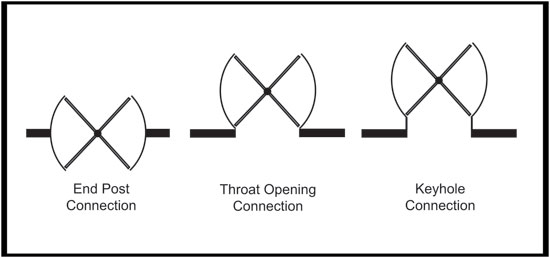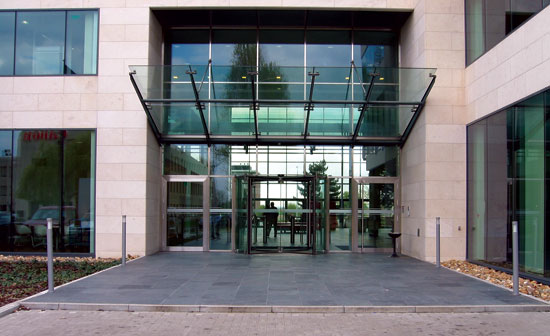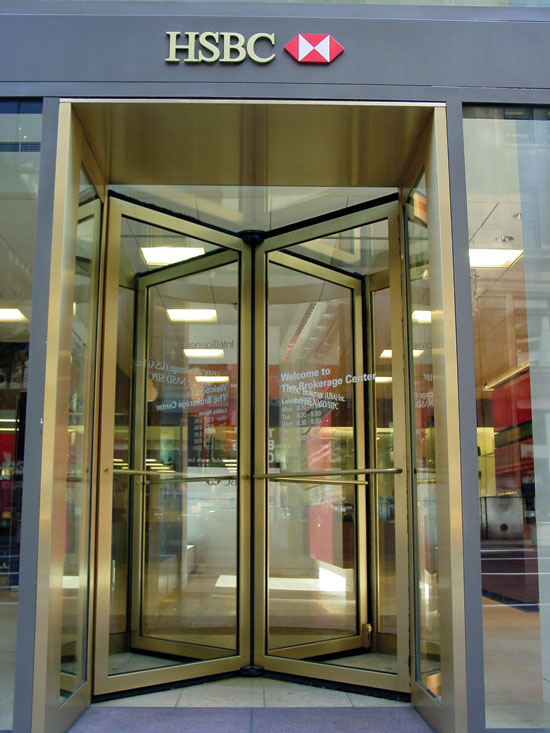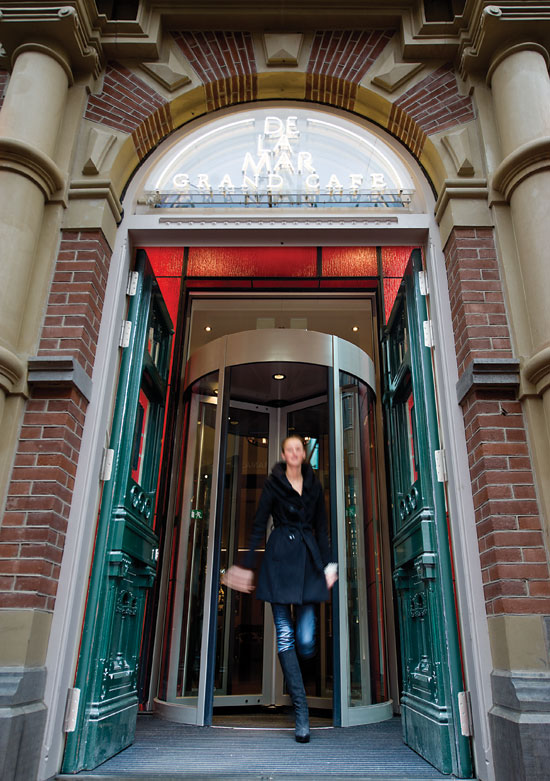The Ins and Outs of Revolving Doors
Key Elements of Revolving Door Design
A building's entrance is its calling card, its first contact with visitors. As such its design is a key element to its success. In order to specify the right revolving door for a given project, several factors must be considered.
Façade
Revolving doors are an opportunity to enhance the drama of a building façade. Today's all-glass facades are the most popular building design and have virtually universal aesthetic appeal. Available in various widths and heights, an all-glass door complements the appeal of a glass façade. Minimal stainless steel trim and patch fittings contribute to a clean, sleek look. All-glass doors are naturally suitable for modern glass facades but they can also serve as a dramatic element in more traditional or classic designs. Vandalism-or burglary-resistant glass is also available. However, it is critical to note though that, by code, all glass doors in the U.S. are manually operated.
Another very common façade is a storefront which typically includes finished metal or painted elements with glass windows. To complement this style, the more traditional aluminum and glass revolving door works well as the frame can be either anodized or powder coated in a wide variety of colors to match the storefront. Architects interested in a more polished look can select cladding in stainless steel or another type of metal, such as bronze. Door wings and the drum walls can be inlaid with clear or tinted glass and where appropriate the drum can be in constructed of solid metal panels.

Image courtesy of Boon Edam
Revolving doors can be connected to the building at mid post, throat opening, or by keyhole configuration.
Connections to the Building
Revolving doors can be connected to buildings at mid-post, throat opening, and in several “keyhole” configurations including standard, double-bent glass, and angled. The common connection used is the midpost. However, since half of the door protrudes beyond the building envelope, it would not be recommended where pedestrian space is limited or without a protective building overhang. An interior keyhole may be used when the lobby is large enough that the door will not encroach on a nearby elevator lobby, stairs, and escalators.

Image courtesy of Boon Edam
Building overhangs and floor grates or mats are recommended to protect people and reduce debris infiltration.
With an interior throat opening or keyhole connection, a door is completely mounted into the interior of a building and there is no part of the door itself that is exposed beyond the building envelope. This eliminates any rain or snow accumulating on the top of the door and greatly reduces accumulation inside the door. It also greatly benefits useful life and reduces the amount of maintenance needed. Finally, an interior mounted door creates a mini overhang or awning effect that protects users from rain or snow just before they enter the door.

Image courtesy of Boon Edam
An interior keyhole connection provides a mini overhang to protect people and door from the elements.
Brand
Brand is important to all enterprises, and revolving doors can be selected to enhance an organization's brand identity among users. Doors can showcase trim color and glass options, including custom logo screen printing on the glass, custom pushbars, and canopy finishing and design in a way that emphasizes the visual identity of a company or organization. Automatic revolving doors with glass “showcases” in them allow space for seasonal promotions or special events.
Dimensional Elements
The diameter of the door, the height of the door opening and canopy, sidewall enclosure base, bottom rail sideline, and the width of vertical styles can all be optimized to create the desired look and complement surrounding building elements and doors. When these dimensional elements are specified with consideration of the surrounding features, a fluid and harmonious sightline is created. For dramatic appeal, an additional curved glass enclosure can be constructed above the revolving door to greatly elevate the door's visual impact.

Image courtesy of Boon Edam
Revolving doors have maintained an “always open to people, always closed to the elements” approach since 1888.









